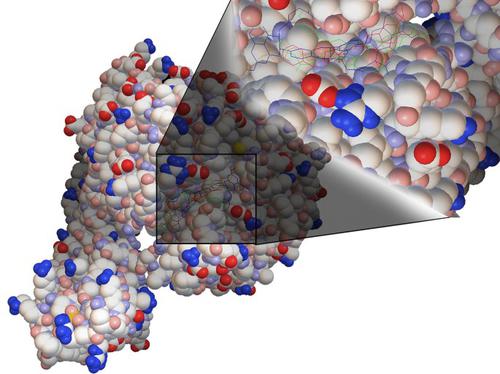Neurotoxicity Research ( IF 3.7 ) Pub Date : 2023-04-22 , DOI: 10.1007/s12640-023-00648-1 Mehran Ebrahimi Shah-Abadi 1 , Armin Ariaei 2 , Fatemeh Moradi 3 , Auob Rustamzadeh 3 , Rastegar Rahmani Tanha 4 , Nader Sadigh 5 , Mohsen Marzban 6 , Mahdi Heydari 3 , Vahid Tavakolian Ferdousie 7

|
Memory impairment is a result of multiple factors including amyloid-beta (Aβ) accumulation. Several receptors are mediated for Aβ transport and signaling. Moreover, blood lipids are involved in Aβ signaling pathway through these receptors. Mediated blood lipid level by statins aims to regulate Aβ signaling cascade. First, the structure of receptors was taken from the RCSB PDB database and prepared with MGLTools and AutoDock tool 4. Second, the ligand was prepared for docking through AutoDock Vina. The binding affinity was calculated, and the binding sites were determined through LigPlot+ software. Besides, pharmacokinetic properties were calculated through multiple software. Finally, a molecular dynamics (MD) simulation was conducted to evaluate ligands stability along with clustering analysis to evaluate proteins connection. Our molecular docking and dynamic analyses revealed silymarin as a potential inhibitor of acetylcholinesterase (AChE), P-glycoprotein, and angiotensin-converting enzyme 2 (ACE2) with 0.704, 0.85, and 0.83 Å for RMSD along with -114.27, -107.44, and -122.51 kcal/mol for free binding energy, respectively. Moreover, rosuvastatin and quercetin have more stability compared to silymarin and donepezil in complex with P-glycoprotein and ACE2, respectively. Eventually, based on clustering and pharmacokinetics analysis, silymarin, rosuvastatin, and quercetin are suggested to be involved in peripheral clearance of Aβ. The bioactivity effects of mentioned statins and antioxidants are predicted to be helpful in treating memory impairment in Alzheimer’s disease (AD). Nevertheless, mentioned drug effect could be improved by nanoparticles to facilitate penetration of the blood–brain barrier (BBB).
中文翻译:

天然和合成化合物与阿尔茨海默病相关关键蛋白质的计算机相互作用:设计新治疗化合物的前景
记忆障碍是多种因素造成的,包括β淀粉样蛋白(Aβ)的积累。多种受体介导 Aβ 转运和信号传导。此外,血脂通过这些受体参与 Aβ 信号通路。他汀类药物介导的血脂水平旨在调节 Aβ 信号级联反应。首先,从 RCSB PDB 数据库中获取受体结构,并使用 MGLTools 和 AutoDock 工具 4 进行准备。其次,通过 AutoDock Vina 准备用于对接的配体。计算结合亲和力,并通过LigPlot+软件确定结合位点。此外,通过多个软件计算药代动力学特性。最后,进行分子动力学(MD)模拟来评估配体稳定性,并进行聚类分析来评估蛋白质连接。我们的分子对接和动态分析表明,水飞蓟素是乙酰胆碱酯酶 (AChE)、P-糖蛋白和血管紧张素转换酶 2 (ACE2) 的潜在抑制剂,RMSD 为 0.704、0.85 和 0.83 Å,以及 -114.27、-107.44 和自由结合能分别为-122.51 kcal/mol。此外,与分别与P-糖蛋白和ACE2复合的水飞蓟素和多奈哌齐相比,瑞舒伐他汀和槲皮素具有更高的稳定性。最终,基于聚类和药代动力学分析,表明水飞蓟素、瑞舒伐他汀和槲皮素参与 Aβ 的外周清除。上述他汀类药物和抗氧化剂的生物活性作用预计有助于治疗阿尔茨海默病 (AD) 中的记忆障碍。尽管如此,纳米粒子可以改善上述药物作用,以促进血脑屏障(BBB)的穿透。



























 京公网安备 11010802027423号
京公网安备 11010802027423号